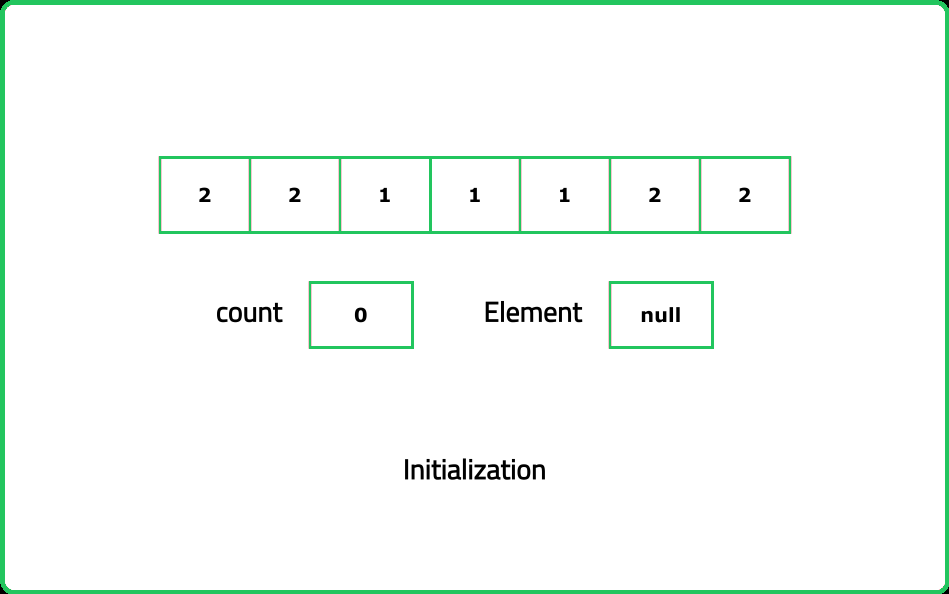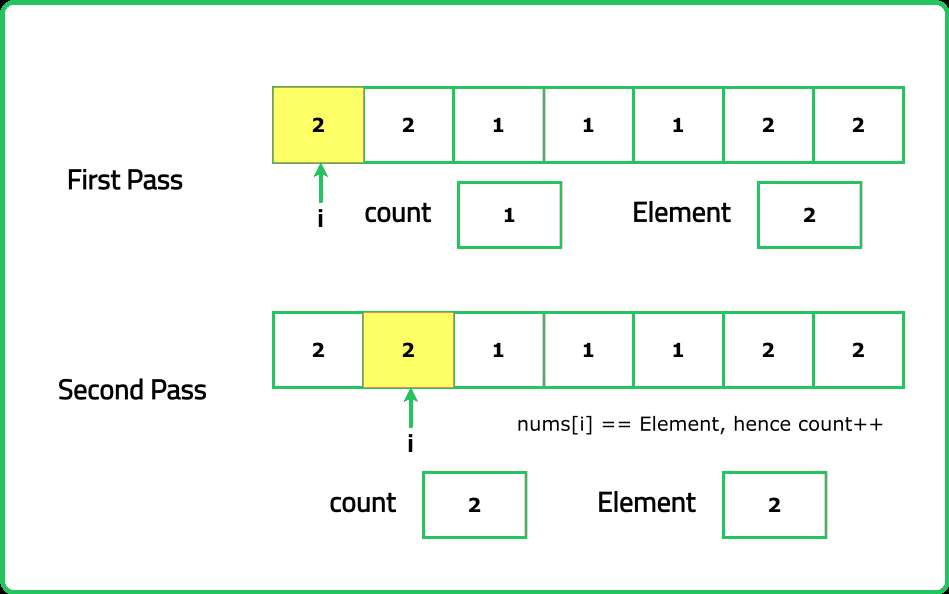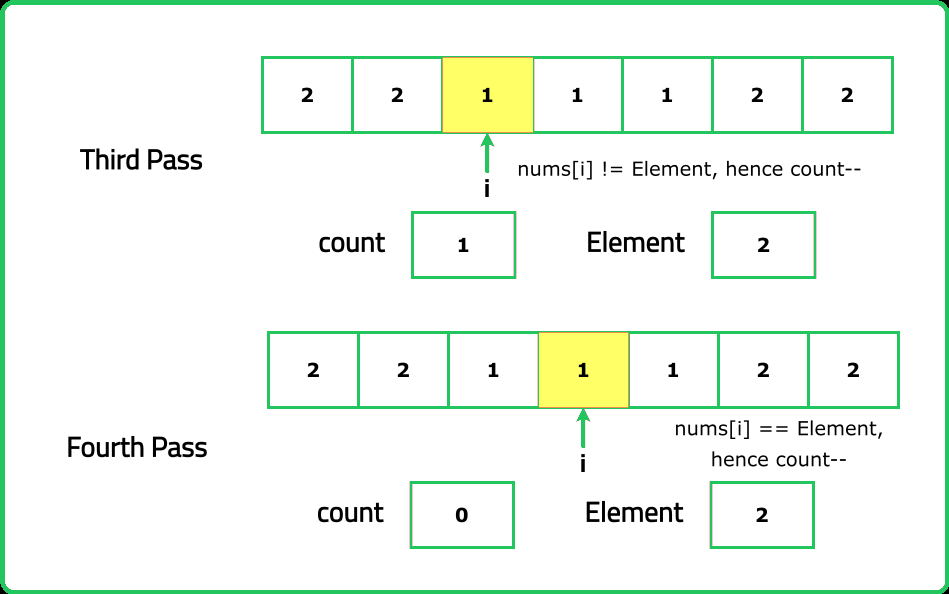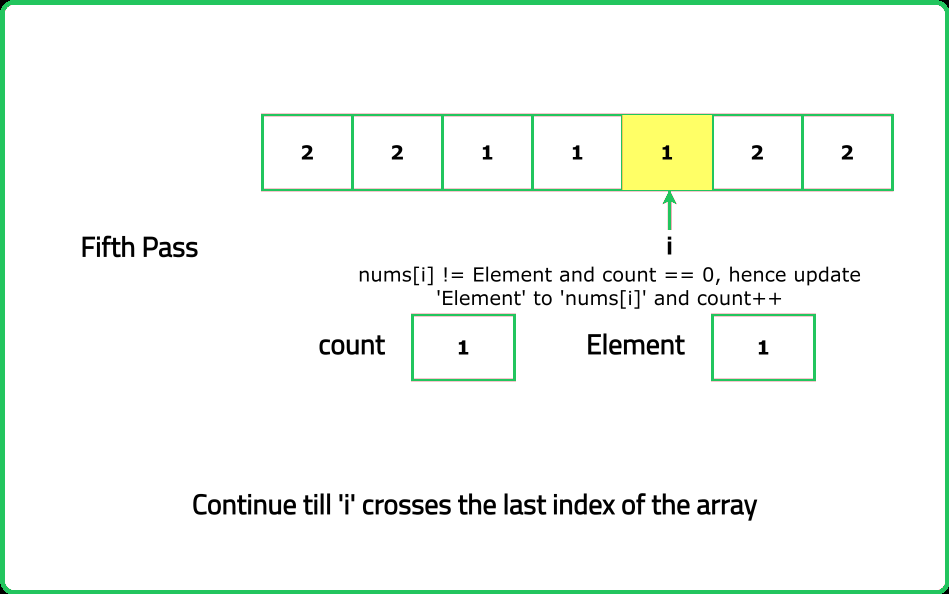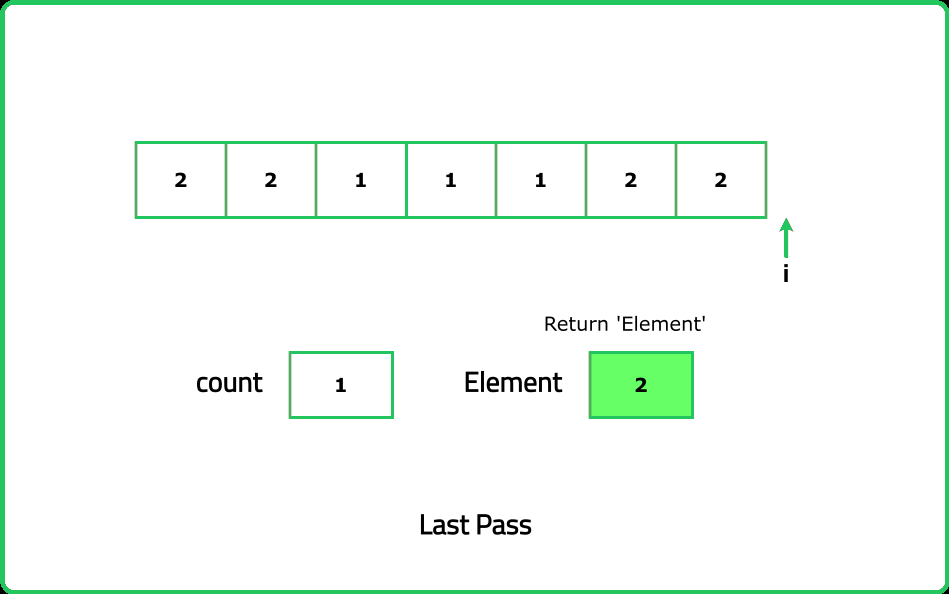Majority Element-I
Arrays
FAQs(Hard)
Hard
Given an integer array nums of size n, return the majority element of the array.
The majority element of an array is an element that appears more than n/2 times in the array. The array is guaranteed to have a majority element.
Examples:
Input: nums = [7, 0, 0, 1, 7, 7, 2, 7, 7]
Output: 7
Explanation: The number 7 appears 5 times in the 9 sized array
Input: nums = [1, 1, 1, 2, 1, 2]
Output: 1
Explanation: The number 1 appears 4 times in the 6 sized array
Input: nums = [-1, -1, -1, -1]
Constraints
- n == nums.length.
- 1 <= n <= 105
- -104 <= nums[i] <= 104
- One value appears more than n/2 times.
Hints
- Keep a count variable while iterating, Increase count when encountering the same candidate. Decrease count when encountering a different number. If count == 0, change candidate. The final candidate will be the majority element.
- Recursively split the array into halves, find the majority element in each half, if both halves agree, return that element.
Company Tags
MongoDB
GE Healthcare
Zomato
Lyft
Zynga
Swiggy
Flipkart
Walmart
Uber
Intel
Micron Technology
Optum
Wayfair
Red Hat
Roblox
Texas Instruments
OYO Rooms
PwC
Instacart
eBay
Salesforce
Epic Games
Splunk
Medtronic
Bloomberg
Google
Microsoft
Amazon
Meta
Apple
Netflix
Adobe
